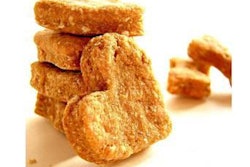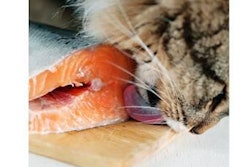Over the past few weeks (September–October 2014) petfood manufacturers have been apprised that DL-methionine is in short supply, and they are being asked to allocate the limited supply to essential formulas or to reduce usage where possible. The shortage is presumably due to new production capacity that has not yet come online in Asia and may be complicated by shortages in raw materials.
While this is a temporary matter that will resolve itself early in 2015, the potential exists for a recurrence in the future. In the meantime, petfood companies have a dilemma on their hands, because methionine is an important amino acid to dog and cat nutrition (see Petfood Industry magazine, November 2007) and completely eliminating DL-methionine from the diet is probably unwise. So what are the options?
First, it is important to realize that the petfood industry is a minor user of DL-methionine on a global scale, relative to poultry and swine. For these livestock species, it is economically vital to support optimal growth and development. These industries have the ability to adjust their formulas rapidly to replace DL-methionine and they will do so as supply and costs fluctuate. This could create a quick easing for petfood supply needs. However, the petfood market, due to expensive packaging and merchandising via consumer retail channels, is less able to make rapid wholesale changes, so their options are limited.
In petfoods, like livestock feeds, we use DL-methionine to augment the limiting amino acids in the diet and to meet the documented minimums per the established nutritional standards (AAFCO, NRC, FEDIAF). However meeting the minimum is seldom the norm. Today most petfoods are nutritionally over-formulated—by a significant amount—especially protein and its constituent amino acids, so native or intrinsic methionine is seldom limiting. Then why supplement? Perhaps because it is relatively inexpensive insurance against any fluctuations in the basal raw ingredients.
There are a number of other reasons why petfood might contain DL-methionine above minimal requirements. One can add methionine to the diet as a part of a nutrient substitution for choline. As stated in AAFCO (2014), a portion of the methionine can be used to “substitute for choline as a methyl donor.” Cats have been shown to select for methionine in their diet (Rogers et al., 2004), so it can serve as part of a palatant system, and it can also be used to lower urine pH (Funaba et al., 2001).
In addition, it may play a role in fortifying the diet for dogs prone to dilated cardiomyopathy by supporting taurine synthesis (Torres et al., 2003). Finally, hair contains a great deal of the sulfur amino acids (Hendriks et al., 1998) and a surfeit of methionine might be beneficial to skin and coat maintenance. Petfood companies work to ensure that there is plenty of methionine in the diet to support all of these vital aspects of nutrition by enhancing the natural supply of methionine with supplemental DL-methionine. Now in a tight situation they may have to think a bit differently.
In order to reduce the amount of supplemental DL-methionine to a level that just meets the needs for methionine, has minimal impact on the formula and the process in the short-run, and does not compromise animal health, the following options might be considered:
- Eliminate excess methionine. If the formula has a quality control documented excess of methionine, then a small reduction of DL-methionine to meet dietary requirements could be executed. This can often be done as a manual override in many manufacturing plants. Relying on quality control values is vital to understanding where ingredient and finished product variation is more pronounced and where adjustments are most likely to work.
- Use cysteine to spare methionine. Cysteine can reduce methionine that is directed towards protein synthesis, thereby sparing nearly half of the methionine required. Most diets are adequate in cysteine and because of this “sparing effect” we take it into account either as a combined (dog) or separate (cat) dietary need to satisfy the sulfur amino acid requirements. Cysteine concentration is high in structural proteins and may be prevalent in the diet in amounts not previously taken into account. However, caution must be exercised as studies with dogs have shown cysteine may be poorly digested due to native chemical composition or processing damage (Johnson et al., 1997).
- Increase folic acid, choline and betaine. These “vitamins” have been shown to spare methyl groups and thereby decrease the reliance on methionine for this function. We often supplement them as ingredients either in vitamin premixes (e.g., folic acid) or as separate ingredient premixes (e.g., choline chloride). So adjusting the amount in the formula can be a relatively straight forward manual modification that does not have any significant impact on the ingredient panel.
- Use a hydroxy analogue. The analogue, 2-hydroxy-4-methylthio-butanoic acid, commonly referred to as hydroxy methionine analog or HMA, is available in the market from at least two commercial suppliers. These compounds are more common in livestock circles, having been researched and evaluated exhaustively in poultry as an alternative to DL-methionine. One study in dogs would suggest that HMA when added at 0.1% and 0.2% of the diet performed similar to a corresponding dose of DL-methionine for growth, dietary utilization, urinary excretion and measures of circulating methionine and cysteine (Middelbos et al., 2006).
Of course one could completely reformulate the diet to increase methionine and cysteine from whole ingredient sources. Ingredients naturally rich in these sulfur amino acids include meat, liver, organ meats, eggs and corn gluten meal, to name a few. But this would be a last-ditch and more permanent effort that would also require alternations to the label and incur costs to update packaging. The hope is that supply issues would be resolved before that becomes necessary.
Unlike shortages of some other ingredients, a short supply of DL-methionine is not an insurmountable hurdle, and there are several viable options to overcome the disruptions. Some of these options might actually be worthy of consideration as more permanent solutions if the supply chain looks unstable in the future.















